Radio in the world
Two years after the invention of the telephone, on March 12, 1878, Thomas Edison presents in Paris the first "talking machine", which is none other than the phonograph. From a small funnel one could hear the sounds of a military march, which Edison had written especially for the first listeners of his invention. The phonograph was the first machine to reproduce the human voice.
September 26, 1887: Less than ten years after Edison's marvelous invention, a new machine, the gramophone, makes its appearance. Its inventor was the German-born American Emil Berliner, who a few years later manufactured even more advanced recording discs, from wax. Phonograph and gramophone delight and amuse astonished listeners, but only at close range, as no way has yet been found to transport the sound, the voice, the melody, for mass listening.
Guglielmo Marconi is the first to achieve this, in 1895, putting into practice the theoretical possibilities of radio transmission. For Marconi, the most profitable market for business growth was navigational communication. In addition, its financial surface offered it the possibility to "endure" the first difficult days, when the market was zero. In practice, wireless communication was considered to be more of a means of communication for the Armed Forces than a means of transmitting entertainment and information. Little by little, however, the public and the industry began to realize the significant possibilities offered by the new medium.
The first broadcast of music and speech was made on Christmas Eve 1906 by American radio pioneer Reginald Aubrey Fessenden, a Canadian-born American physicist and electrical engineer. The broadcast begins on Christmas Eve from the National Electrical Signaling Company radio station in Bryant Rock, Massachusetts. The program included a violin performance of Gounod's "Holy Night," as well as excerpts from the Gospel of St. Luke along with a Christmas greeting read by Fessenden himself. Wireless transmission reaches ships more than 100 miles away.
In 1908 the Dublin Daily Express had commissioned Marconi to help with the use of new technology in reporting on the Kingstown ferry races. A land-based receiver was installed in the garden of the Kingstown harbor office and a ship fitted with a transmitter monitored the progress of the dinghies. The news was transmitted in Morse code, from the ship to the receiver and from there by telephone to the offices of the Daily Express. That same evening, the readers of the paper knew the progress of the Kingstown boat races which was a real achievement. Lee de Forest, another American researcher, was instrumental in developing the modern form of radio. In 1907 he implemented the electronic vacuum tube which made possible the development of modern electronic communications. Forest's lamp was later replaced by the transistor. Forest emerged as one of the fathers of modern radio broadcasting by broadcasting an entire operetta from New York's Metropolitan Opera in 1910 starring the then famous Enrico Caruso.
In 1910, the "underground radio amateurs" upset America, managing two years later, in 1912, to pass the Radio Regulations, which provided for the procedure for granting radio licenses.
1916: Guglielmo Marconi began the first experimental radio broadcasts, experimentally building the first VHF radio receivers.
1916: David Sarnoff envisions the radio as a "home convenience" and submits his famous "Radio Music Box" memo to Marconi officials.
1917: AM transmitter: Modulation of a carrier frequency using a speech signal.
In 1919, the first regular broadcasts begin to take place, not only in the USA but also in Europe.
On November 2, 1920, the first commercial radio station, called KOKA, manufactured by WESTINGHOUSE, began operating in Pittsburgh. The broadcast begins at 8:00 pm until 9:30 pm with reports from the Harding-Cox presidential election results. Through KOKA, the American Broadcasting and Research Corporation broadcast concerts, two or three times a week. Through the first commercial radio station KOKA, RCA establishes an international message service with France, Germany and Argentina. In the 1920s the wealthy began to receive the first radio broadcasts on their own radio sets using crystals. In the twenty years before World War 20, the growing public interest in the development of radio and the growing importance of radio networks for government agencies, armed forces and navigation services, gave a strong impetus to the development of electronics. Vacuum tube technology and circuit theory are making continuous advances. Electronics are expanding into other fields of application. The techniques of radio and telephony show increasingly obvious links, and the exchange of information about what is discovered in these fields is becoming more and more frequent.
1921: Within a year of the first commercial radio broadcast in the US, the first sporting events are broadcast over the airwaves, including tennis, boxing and baseball. These contests, along with music programs, accelerated the popularity of radio entertainment so that by the end of 1921, eight radio stations were established and operating in the United States. On December 28, 1921, electric loudspeakers that amplify the volume of reproduced sound appear on the market for the first time. Is sports taking over radio or the other way around? Be that as it may, in 1921 the match between two boxing legends, Jack Demsey and George Carpentier, was broadcast live in America. About 300,000 people listen to this match. 1922: The entire football match is broadcast from Pittsburgh. At that time there were an estimated 100,000 radio sets in the US.
1924: It is estimated that over 3 million radio sets are in use in the United States. On December 4, 1924, the first radio station opens in Berlin with the slogan: "Radio for everyone!". Radio stations in Leipzig, Munich, Hamburg, Stuttgart and a few others operate almost simultaneously. Until the late 1920s headphones were needed to listen to the radio. The Gecophone funnel manufactured in 1925 was the first widely available radio device that amplified sound sufficiently to eliminate the need for headphones. This allowed many people to listen to the radio together. Radios at that time cost a fortune and interest in radio broadcasts was very high. Thus, a simple radio listening could easily turn into a massive social event.
In 1925, the International Radio Union was founded in Bern, which the following year issued the first table of distribution of airwaves in the various member states of the Union.
In 1926 radio listeners in Britain reached two million. At that time in Greece, it is estimated that 200 radio stations were operating, which, in the absence of a Greek radio station, listened to foreigners.
1928: Frequency Modulation (FM) – Better sound quality for broadcasting. In the 1930s people in many countries of the world heard news, novel adaptations and plays from thousands of miles away. Radio had already become the first mass broadcasting medium.
In 1938 the actor Orson Welles broadcast on an American radio station an adaptation of the novel by H.J. Wells "The War of the Worlds", about the Martian invasion of earth. The radio production was so successful that many listeners believed it was a real newscast. Some of them even went so far as to create makeshift shelters and armed themselves to defend themselves from the "invaders".
Το 1940 το ραδιόφωνο έχει αναπτυχθεί πλέον σε ολόκληρο τον κόσμο.
In 1947 the Americans John Bardeen, Walter Brattain and William Shockley invented the transistor. 1948: Bell announces the invention. The invention of the transistor in the 1950s had a huge impact on the electronics industry and their production costs, as it allowed smaller and cheaper radios to be made. In terms of broadcasting, cells (transistors) replaced tube technology and have undoubtedly been the biggest factor in the improvement of technical equipment used either for editing in the studio or for reporting in sports arenas.
In 1950, the "European Radio Union" was founded, which undertook the protection of the rights of the various national agreements surrounding the operational issues of radio broadcasting. The spread of radio (indicative data from various countries of the world) during the end of 1951, on the eve of the Oslo Winter Olympics, is presented as follows:
| Country | Radios | Radios/1,000 residents | |
| 1 | United States | 91.460.000 | 624 |
| 2 | Great Britain | 11.800.000 | 231 |
| 3 | Germany | 11.025.000 | 170 |
| 4 | Soviet Union | 11.000.000 | 57 |
| 5 | Japan | 9.000.000 | 108 |
| 6 | France | 6.890.000 | 170 |
| 7 | Italy | 3.154.000 | 68 |
| 8 | Brazil | 2.500.000 | 109 |
| 9 | Czechoslovakia | 2.413.000 | 192 |
| 10 | Sweden | 2.172.000 | 308 |
| 11 | Canada | 2.146.000 | 162 |
| 12 | Australia | 2.064.000 | 247 |
| 13 | Netherlands | 1.995.000 | 193 |
| 14 | Belgium | 1.549.000 | 182 |
| 15 | Argentina | 1.500.000 | 92 |
| 16 | Poland | 1.464.000 | 61 |
| 17 | Austria | 1.320.000 | 188 |
| 18 | Denmark | 1.235.000 | 305 |
| 19 | Mexico | 1.220.000 | 51 |
| 20 | Ελβετία | 1.057.000 | 221 |
| 21 | Norway | 787.000 | 240 |
| 22 | Finland | 737.000 | 183 |
| 23 | Hungary | 606.000 | 67 |
| 24 | Spain | 604.000 | 108 |
| 25 | South Africa | 556.000 | 49 |
| 26 | India | 518.000 | 14 |
| 27 | Chile | 500.000 | 97 |
| 28 | New Zealand | 461.000 | 239 |
| 29 | Yugoslavia | 333.000 | 22 |
| 30 | Israel | 310.000 | 101 |
| 31 | Turkey | 333.000 | 101 |
| 32 | Romania | 270.000 | 14 |
| 33 | Portugal | 233.000 | 10 |
| 34 | Greece | 220.000 | 27 |
| 35 | Bulgaria | 210.000 | 26 |
| 36 | Algeria | 202.000 | 29 |
| 37 | Egypt | 183.000 | 23 |
| 38 | Morocco | 133.000 | 9 |
October 20, 1958: The first stereophonic records are manufactured.
In 1960 there were 350 million radio receivers worldwide.
In 1970, radio receivers reached 750 million.
Integrated circuit technology has consistently continued to lead to the reduction of volume, weight and power consumption of a wide range of equipment, while at the same time leading to significant increases in stability and reliability.
In 1980 there were more than 1 billion radio receivers worldwide. The relentless invasion of television, with the advantage of direct image and sound transmission from every part of the planet, displaced radio from the top of information, but forced it to organize itself better and keep its own loyal audience. There are times when one cannot be a TV viewer, such as when working or driving a car. But at this time he can enjoy, at a low volume, a pleasant music program or listen to the news on the radio.
RADIO IN GREECE
Sporadic reports about wireless and its applications, there are several in the Greek press until the end of the century. One of the most interesting articles was published in the newspaper "Paligenesia" on June 26, 1899: "...it is announced that in a short time the telephone and the telegraph will work wirelessly. A mere ray of sunlight traversing space will serve as a conductor of current and connect the rather distant distances. The inventor of the wireless telephone is an American, the Hague, who made successful experiments in New York. Very interesting details of the operation of this new machine, which was called a radio, are also mentioned. It is certain that this new invention will quickly be put into general use and application." Public opinion will begin to be informed somewhat concretely and with scientific explanations from very early on. Publication from "Estia" of January 26, 1900. "Today's lecture at "Parnasso" by the distinguished professor Mr. Tim. Argyropoulou, the most beautiful of all that he has done so far. You mean that from its subject. He will talk about the greatest discoveries bequeathed to humanity by the blessed nineteenth century (...). And all this you noted, it is a colossal undertaking to ask to summarize almost all the fundamental principles of electricity, in order to reach the pinnacle of discoveries, the wireless telegraph. So you will see the device of the famous Marconi. At one end of the hall he set up the pompon, a Rumkoff spindle. And at the other end the radiation of the radio conductor with the Branly device...'. For a quarter of a century the word radio will be forgotten, but the new possibility of wireless communication will gradually start to interest more and more Greeks.
The interest in radio in Greece was rekindled in 1923 with the initiatives of K. Petropoulos, the curator of the physics department of the University of Athens, who created a core of radio amateurs who worked with pure radio equipment at a time when in Greece very few knew of the existence of radio. In the same year, the first experimental radio broadcast in Greece takes place from the Votanikos station, where a 200 watt wireless telephone transmitter of the AKTIEBOLAGET company was used.
In 1924, the first appearance of the radio was successfully made at the "ALAMBRA" theater, where the comedy "Dia tou asyrmatou" by Vassilis Argyropoulos was performed.
The manufacture of commercial radio receivers began in 1925. In the same year, the first 7-tube, battery-operated frame radio was sold by Metron Laboratories (America Square). Many rush to do the same despite its difficult and complex use. The introduction of radios in Greece also began in 1925 by S. Stylianidis ("Radio II") and the Zachariou houses ("Arcolette / Siemens - Telefunken" and S. Fontana - Avgerinos "Super Radiola").
The movement and interest in radio multiplied and in 1927, the establishment of the "Group of Friends of the Radio" chaired by Professor Dimitrios Chondros, opened new horizons in the field of radio.
In 1928, the first radio station in Greece and the Balkans was founded by the private person Christos Tsingiridis and the only one that operated systematically until 1936.
The pioneer of Greek Radio, Christos Tsingiridis, was born in 1877 in Philippopolis, Eastern Romilia. After finishing high school in France, he went to Stuttgart, Germany, where he studied electrical engineering at the university there. His dream, however, was radio. Thus, he founded in Thessaloniki in 1928 the first radio station of Greece and the Balkans. During the occupation period he was imprisoned by the Germans. After the liberation, he managed with a lot of effort to get his station back into operation. Tsingiridis died in 1947. On the initiative of the newspaper Makedonia of Thessaloniki, a statue has been erected to him.
From the year 1932 to 1935, some radio broadcasts were made in the Athens area from the Piraeus radio station with a power of 200 watts, medium waves, which belonged to the Radiotelegraph Service of the Ministry of Transport and Communications. In July 1936, under Prime Minister Ioannis Metaxas, an international tender was announced which was awarded to the Telefunken company.
On January 25, 1938, the final agreement was signed between Telefunken and the Greek state for the installation of a radio station. Telefunken installed the transmitter of the first Athens State Radio Station, with a power of 15 kilowatts, which operated in Nea Liosia (Ilion today). The exploitation of radio broadcasting was taken over by the "Radio Broadcasting Service - Y.R.E.".
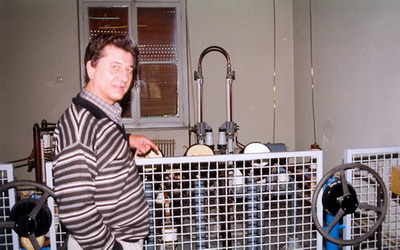
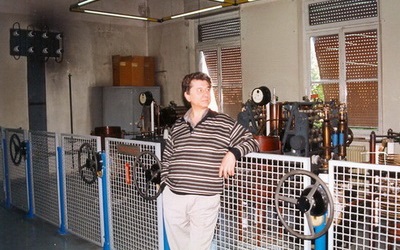
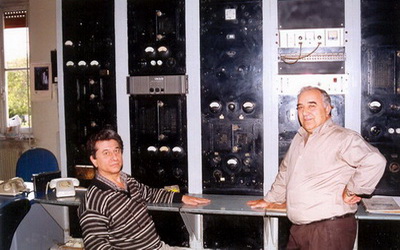
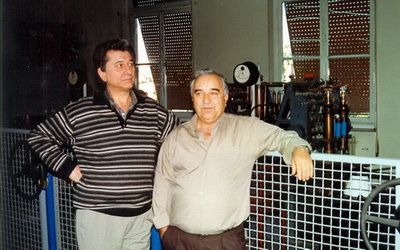
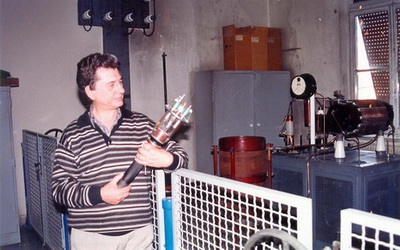
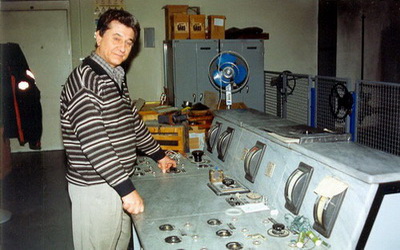
The transmitter of the Athens Radio Station was inaugurated on March 25, 1938 by King George II. During the Greco-Italian war and the German attack, the Athens transmitter played a large role in the psychosis and information of the fighting nation. Many, however, called the radio... "night radio", because it was heard in the evening hours. A few more months would pass, until Saturday, May 21, 1938 at 7 p.m., when the first signal was heard: “Forward, forward. This is the Athens Radio Station!" from the transmitter of Liosia (today's Municipality of Ilion). The Station's radio booths operated in the Zappeion Megaro and the programs were transmitted via an underground cable.
The buyer of the radio was obliged within ten days of its purchase to declare it to the National Radio Foundation. The subscription in 1945 per quarter was 1000 drachmas, while a year later it became 9000. In 1947 it became 15,000 drachmas and by 1950 it reached 30,000 drachmas. Today, we pay our subscription for the national radio and television networks through the PPC account.
1939 – 1941: The "Weekly Program of the Athens Radio Station" is published by the Ministry of Press. The first attempt to broadcast a shortwave radio station was made immediately after the outbreak of the Greco-Italian war, in October 1940. From a small transmitter in the center of Athens, broadcasts of the Athens Radio Station were broadcast to the front and the Balkan countries.
On April 27, 1941, while the German troops occupied the capital of Greece, the Athens radio station broadcast its last bulletin: "From moment to moment the Hellenic Radio Station will cease to be Greek". For 42 months and until the liberation (October 13, 1944), the Athens Radio Station operated under German occupation.
On October 14, 1943, an order was published by the German occupation authorities to seal the radio stations, so that listeners could only pick up the Athens station that operated under the control of the occupation forces. It is estimated that around 43,000 radios were sealed during the occupation.
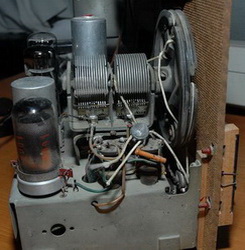
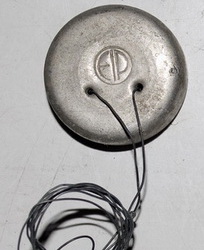

Although the German order was explicit, the Greeks with a suitable arrangement of their radio had access to the London station as well. This was achieved by flipping the shortwave switch.
Here is an excerpt from Radio Television Magazine of April 1945 describing how radio owners heard the news from London on sealed but identified radios:
The time of listening to the London station, either with a hidden, or with a sealed, but "tidy" as they called it, radio, was in all homes the most important of the day. The bolt had to be put in the front door, all the doors and windows had to be hermetically closed and all the family members had to gather in the room where the radio was and in deafening silence listen to the beats "tittitaaaaa... tittitaaaaa...", which they felt with emotion like the beating of their own hearts, and then the speaker's voice: "This is London. Good evening. We convey to you...'. In some houses all the members of the family, together with the radio, went under a blanket, so as to muffle the voice as much as possible, and a friend told us of his surprise, when one evening, entering the living room of a house unannounced, he saw five or six heads under a blanket stirring restlessly, and then projecting one or the other figures down and with the expression of terror painted on their faces.
October 20, 1944: During their withdrawal, the Germans blow up the antennas of the radio station in Nea Liosia. The transmitter is spared total destruction, but the radio station will be silent for a few days.
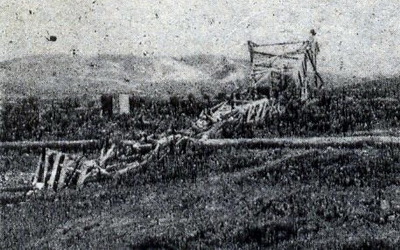
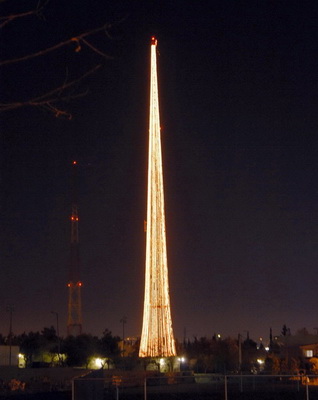
July 16, 1945: The National Radio Foundation begins to operate. The first general director of the EIR was Ir. Petmezas with Mich. as technical director. Anastasiades. The first announcers were Con. Stavropoulos, chief announcer, and John. Veinoglou, Jason Vrontakis, Nik. Hakkas, Mich. Giannakakos, Il. Sayas, Andr. Papadimitriou, Kon. Mitropoulos, Georg. Zacharopoulos, Georg. Gerasakis, Vas. Zochos, Dim. Kousoulas, Niovi Sidiropoulou – Piniatoglou, Elpis Koukaki, Kaiti Asprea, Eugenia Asimakopoulou, Mary Lalopoulou, Mary Veaki, Alexandra Yapapa, Efi Poulakaki (Poly), Kalliopi Paisiou, Mirva Nikolepi – Moschona, Katerina Zachou, Aliki Georgoulis. A special shortwave program was created after the German-Italian occupation, in 1947. From a 7.5KW transmitter, daily transmissions began to Cyprus, Egypt, Turkey, the Balkans, Soviet Union.
March 25, 1946: The Thessaloniki Radio Station is inaugurated with a portable transmitter, mounted on a car. After some time it stops its operation to broadcast again from a fixed point, in March 1947. Radio Stations are created in Volos (12/6/1948), Patras (7/1950). The E.I.R.'s signal "Tsopanakos was..." is gradually expanding with the creation of several military radio stations in the province, throughout the country.
1948: The assignment of the authority to establish radio stations to the Armed Forces does not serve the entertainment needs of the military units, but the promotion of the official state ideology, at a time when Greece is torn apart by civil war. Nevertheless, some radio shows become extremely popular and make history for the quality, creativity and ingenuity of their producers. The establishment of the first Greek Military Radio Station was followed by Armed Forces Radio Stations in Larissa (8/1948), Ioannina (1/1949), Thessaloniki (7/1949), Tripoli (8/1949), Kavala (11/ 1949), in Kozani (1/1950) but also in... Makronisos (11/1948).
The evolution of the number of radio owners in Greece:
1939 (62,000), 1940 (66,000), 1945 (36,000), 1946 (60,000), 1947 (66,000), 1948 (71,000), 1949 (135,000), 1950 (160,000), 1951 (220,000), 1950 (85,000).
1939 (62.000), 1940 (66.000), 1945 (36.000), 1946 (60.000), 1947 (66.000), 1948 (71.000), 1949 (135.000), 1950 (160.000), 1951 (220.000), 1953 (285.000).
On May 11, 1952, the Second Program of the then E.I.R.


